Where ARC Thou Program Payments, Part Deux
TOPICS
USDA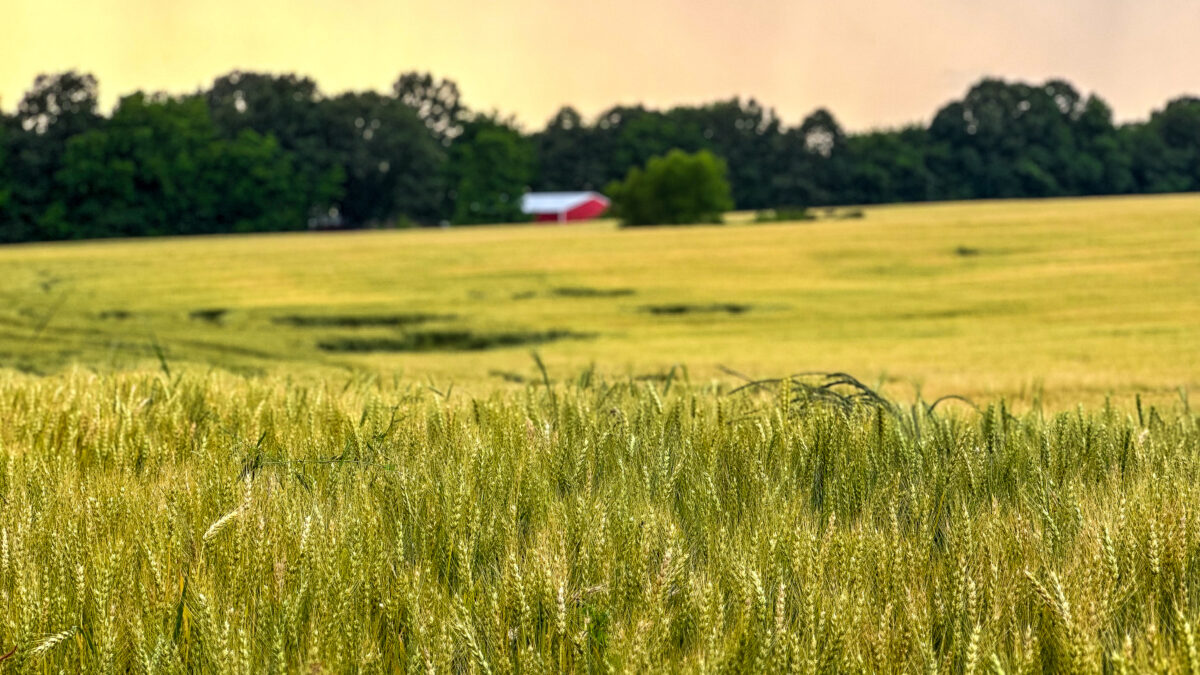
photo credit: AFBF Photo, Morgan Walker
John Newton, Ph.D.
Vice President of Public Policy and Economic Analysis
There are slightly less than 250 million base acres enrolled in the Agricultural Risk Coverage or Price Loss Coverage programs. Of those acres enrolled, nearly 90 percent are represented by corn, soybeans and wheat. A recent Market Intel article, Where ARC Thou, Program Payments?, highlighted ARC-CO program payment information for corn, soybeans and wheat in 2016.
A portion of the remaining acres enrolled in the ARC or PLC farm safety net programs are represented by covered commodities including barley, canola, dry peas, grain sorghum, lentils and oats. For these other field crops, marketing year average prices were announced at the end of September and allowed USDA to calculate county-level Agriculture Risk Coverage-County Option program payment data. Today’s article reviews the county-level distribution of 2016 ARC-CO program payments for barley, canola, dry peas, grain sorghum, lentils and oats.
Marketing Year Average Prices
For the 2016/17 crop year, marketing year average prices decreased for five of the six field crops included in this analysis. Grain sorghum saw the largest price decline, down 16 percent to $2.79 per bushel and 42 percent below the ARC-CO Olympic moving average price of $4.77 per bushel. The price for dry peas was down 14 percent to 11 cents per pound, 23 percent below the ARC-CO Olympic moving average price of 14.23 cents per pound.
Following sorghum and dry peas, the marketing year average barley price was down 10 percent to $4.96 per bushel, 12 percent below the ARC-CO price. The lentil price was down 8 percent from the 2015 marketing year average price but was 22 percent above the ARC-CO price at 28.5 cents per pound. The oat price was down 3 percent and 41 percent from the 2015 marketing year average price and the ARC-CO price, respectively, to $2.06 per bushel. Of the crops analyzed, only canola saw a price increase in 2016. The marketing year average canola price was up 6 percent from the prior year but remained 23 percent below the ARC-CO price at 16.6 cents per pound.
With 2016 marketing year average prices for these field crops well below the ARC-CO Olympic moving average prices, and crop yields in many areas also below the ARC-CO Olympic moving average, ARC-CO payments were anticipated in a variety of areas. The following sections review the distribution of ARC-CO average payment rates by crop.
All Minor Field Crops
There are slightly less than 20 million base acres of barley, canola, dry peas, grain sorghum, lentils and oats enrolled in ARC or PLC. Average ARC-CO payments for these other field crops ranged from $21 per acre (canola) to $32 per acre (grain sorghum). Average per-acre ARC-CO payment rates for all six crops were the highest along the Mississippi and in the Corn Belt and were driven by crop yields below the Olympic moving average and, as highlighted in the previous section, a decline in crop prices during 2016, Figure 1.
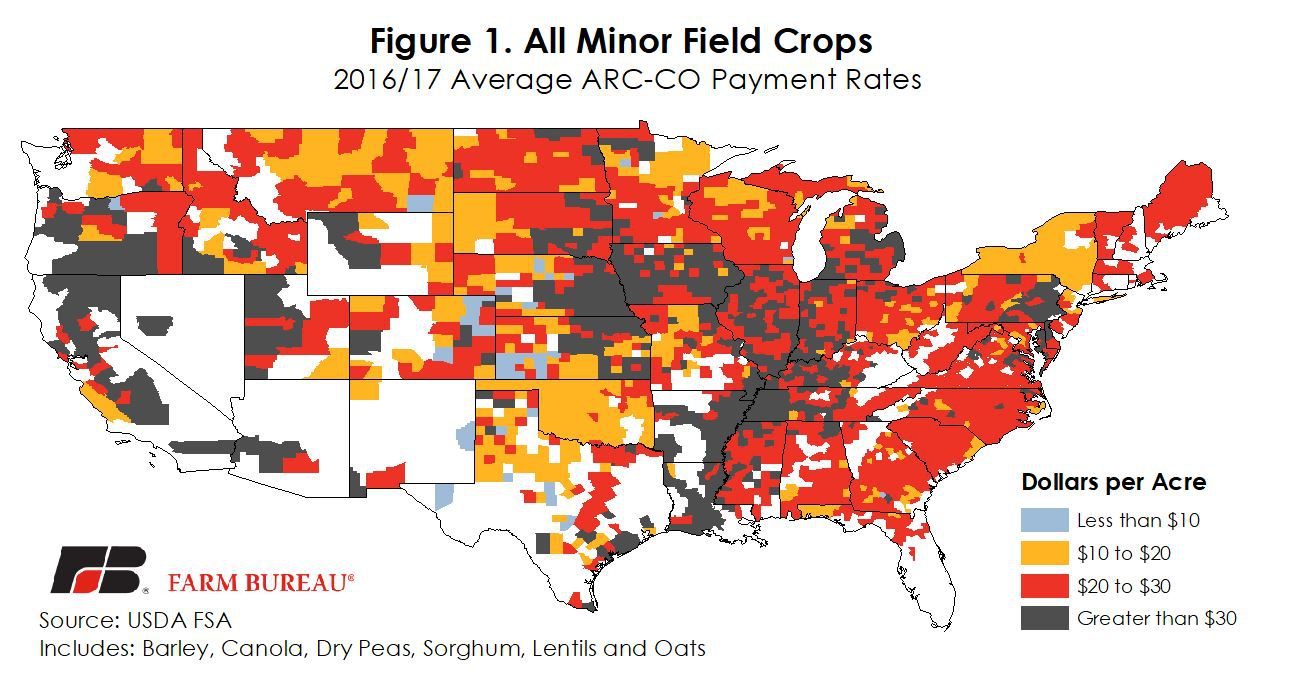
Barley
Approximately 22 percent of enrolled barley acres are eligible for ARC-CO program payments. In the 450 counties receiving an ARC-CO payment, the average payment rate was $25 per base acre. Program payments were the highest in Colorado, Idaho and along the East Coast. In many of these areas barley yields were 10 to 30 percent below the Olympic moving average yield. The combined impact of poor crop yields and a lower marketing year average price resulted in actual county-level revenues 20 percent to 30 percent below the benchmark revenue.
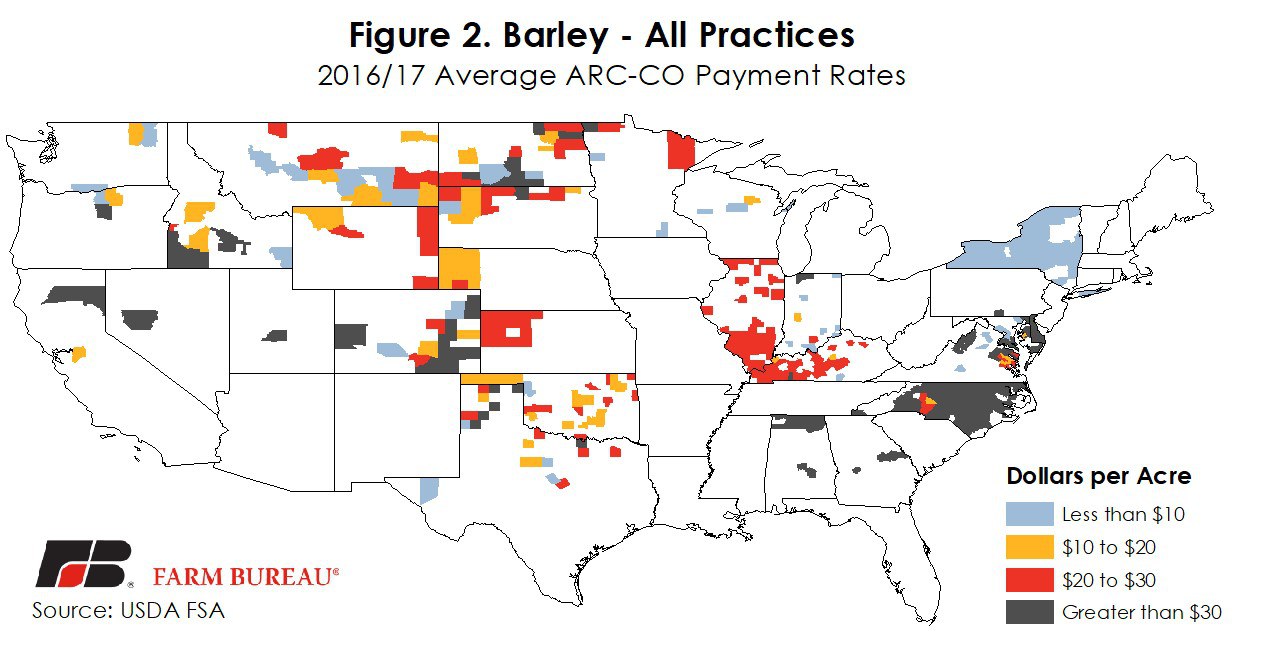
Canola
Approximately 2 percent of enrolled canola acres are eligible for ARC-CO program payments. In the 128 counties receiving an ARC-CO payment, the average payment rate was $20 per base acre. Program payments were the highest in the Kentucky, Tennessee and in the Upper Midwest. In many of these areas canola yields were as much as 20 percent below the Olympic moving average yield. In areas where program payments were the highest, actual county-level revenues were 30 to 40 percent below the benchmark revenue.
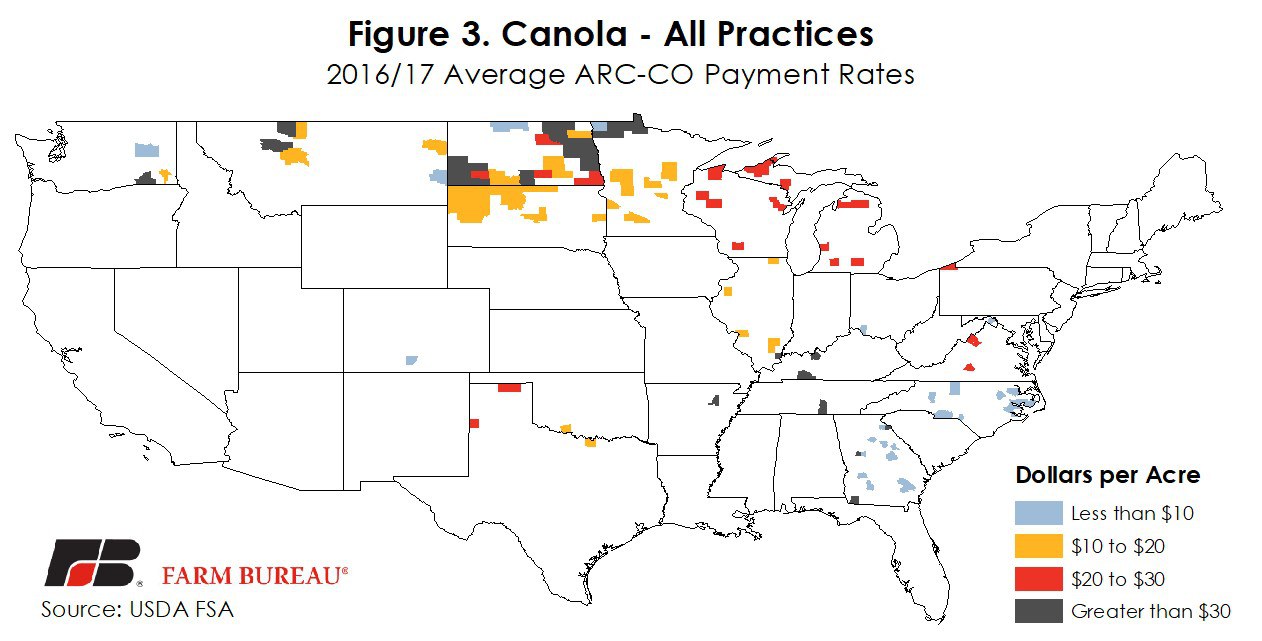
Dry Peas
Approximately 50 percent of enrolled dry pea acres are eligible for ARC-CO program payments. In the 119 counties receiving an ARC-CO payment, the average payment rate was $21 per base acre. Program payments were the highest in the Dakotas. In many of these areas dry pea yields were as much as 30 percent below the Olympic moving average yield. In areas where program payments were the highest actual county-level revenues were 30 to 50 percent below the benchmark revenue.
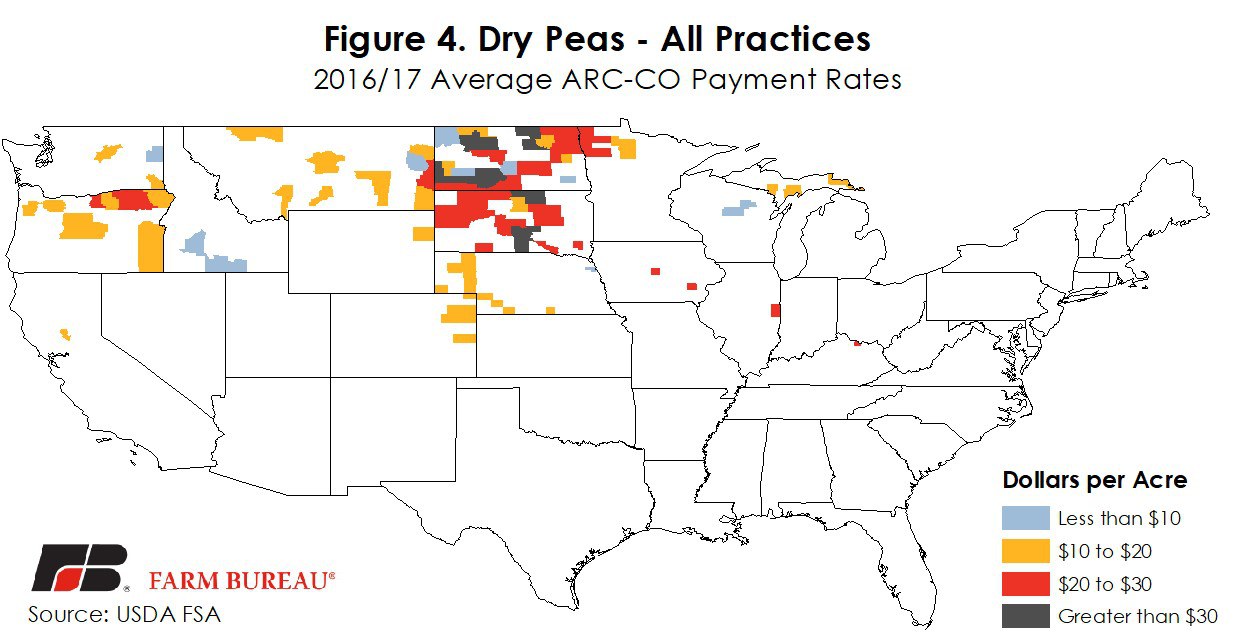
Grain Sorghum
Approximately 30 percent of enrolled grain sorghum acres are eligible for ARC-CO program payments. In the 1,788 counties receiving an ARC-CO payment, the average payment rate was $32 per base acre. Program payments were the highest in the Corn Belt and along the Mississippi River. The primary driver of ARC-CO payments for grain sorghum was the large decline in the marketing year average price, 42 percent below the Olympic moving average price. The price decline resulted in actual county-level revenues 40 to 50 percent below the benchmark revenue.
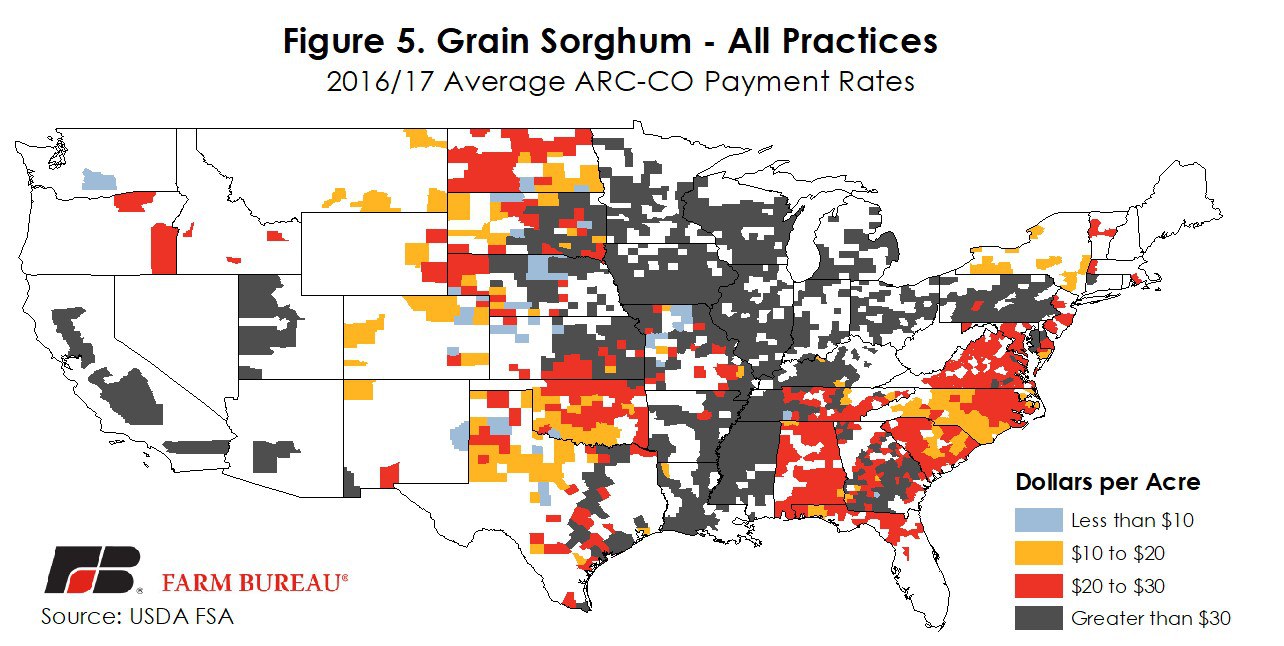
Lentils
Approximately 41 percent of enrolled lentil acres are eligible for ARC-CO program payments. In the 10 counties receiving an ARC-CO payment, the average payment rate was $26 per base acre. In these counties lentil yields were on average 50 percent below the Olympic moving average yields. Thus, while lentil prices were higher in 2016 than the ARC-CO Olympic moving average price, the poor yields resulted in actual county-level revenues that were on average 40 percent below the benchmark revenue.
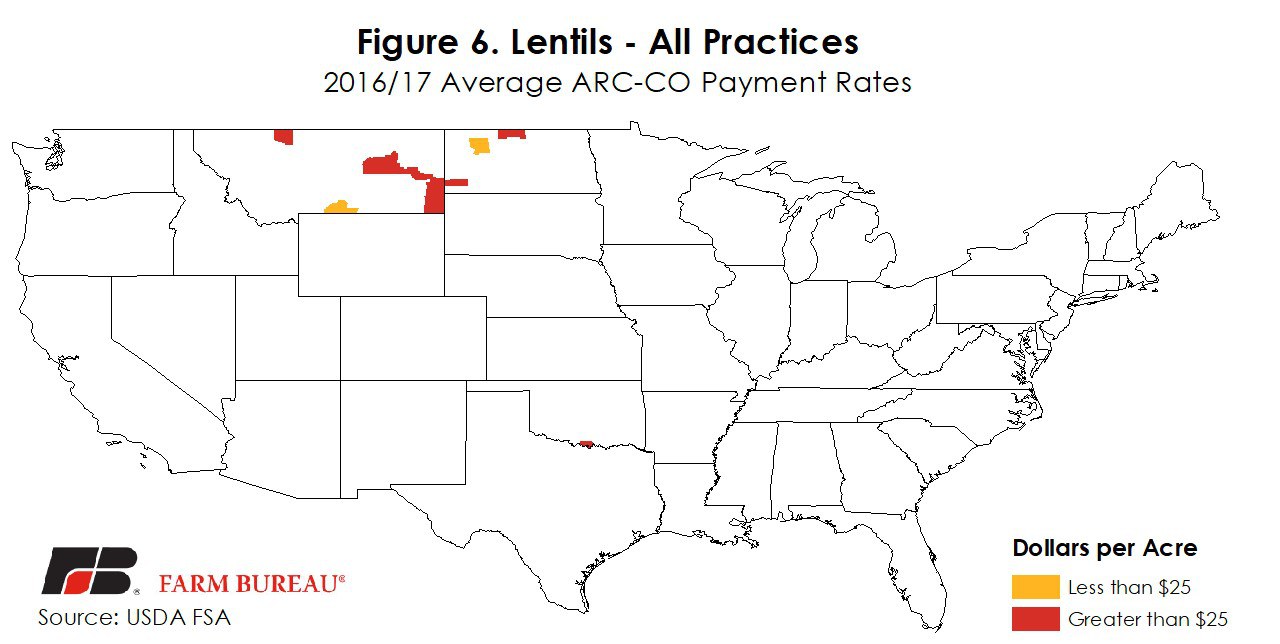
Oats
Approximately 66 percent of enrolled oat acres are eligible for ARC-CO program payments. In the 2,240 counties receiving an ARC-CO payment, the average payment rate was $22 per base acre. Program payments were the highest in the western states, such as California and Oregon. In many of these areas oat yields were 15 to 20 percent below the Olympic moving average yield. Additionally, the marketing year average oat price was 41 percent below the ARC-CO price. The net impact was actual county-level revenues 50 to 60 percent below the benchmark revenue.
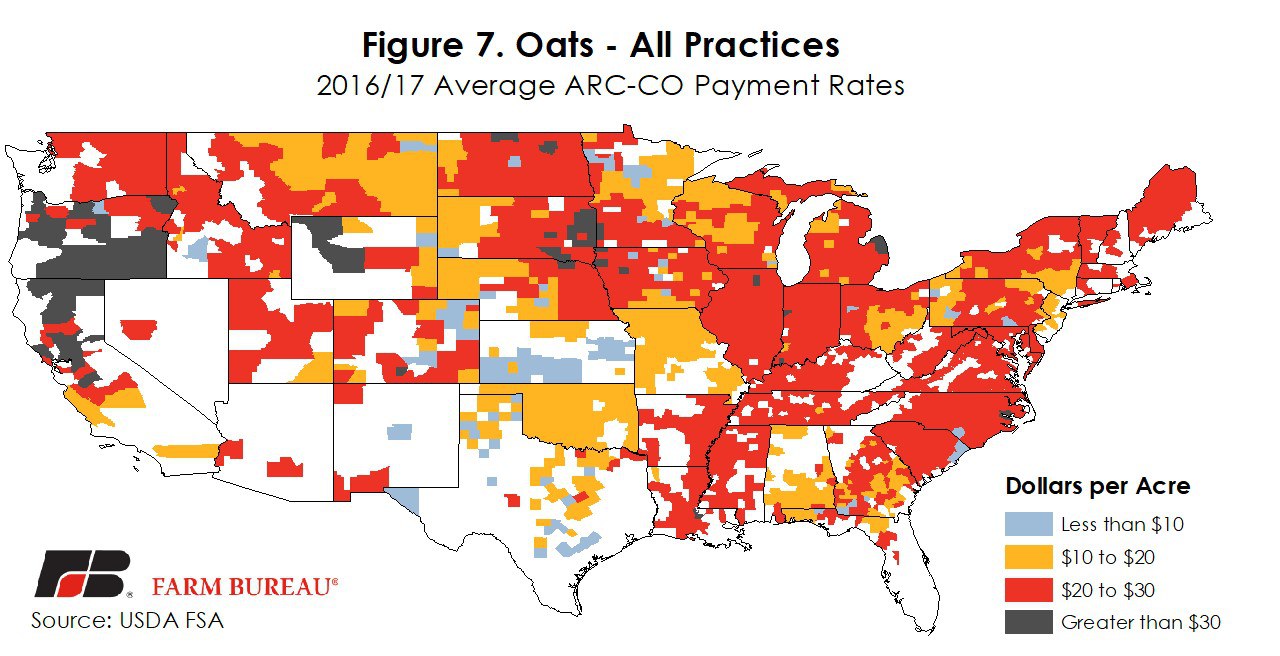
Summary
ARC-CO provides protection against price and yield declines which adversely impact farm revenue. While a majority of the ARC-CO program payments are allocated to corn, soybeans and wheat, other field crops also receive ARC-CO protection. Many of the field crops covered in today’s article are experiencing the lowest prices since 2009. In addition to the prolonged period of low prices, many areas saw yields as much as 50 percent below the historical Olympic moving average. With both price and yield support ARC-CO continues to work as an effective safety net for a variety of field crops.
